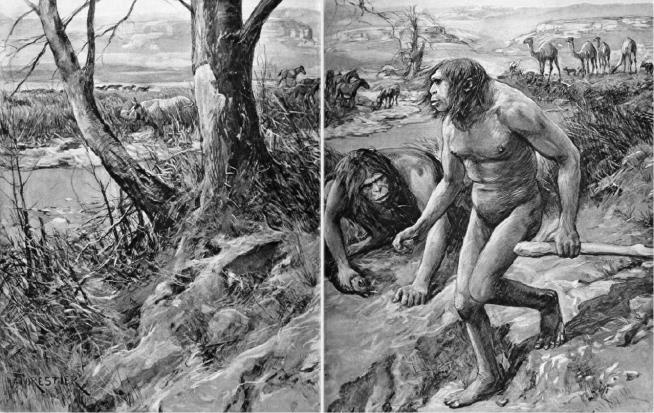In the 1920s, an old tooth was misinterpreted in a very public way
By John Johnson, Jan 6, 2023

An illustration of H. haroldcookii, by artist Amedee Forestier. (Wikipedia)
For a while in the 1920s, it appeared that we'd be talking about "Nebraska Man" for generations as an evolutionary milestone. But as Madeline Bodin writes at Atavist, the name has since faded into obscurity for good reason—it was a very public scientific misfire. The saga began when a Nebraska rancher and geologist named Harold Cook found an ancient tooth in the earth. He suspected it might be that of an early human, or something close to it, and passed it along to one of the most prominent paleontologists of the day, Henry Fairfield Osborn of the American Museum of Natural History. Osborn declared that it was indeed a monumental find, asserting that the tooth belonged to the "first anthropoid ape of America." He trumpeted the discovery, but as it turns out, he was wrong.A few years later, an Osborn colleague who worked on the initial study published a retraction in the journal Science and said the tooth actually belonged not to a primate but to a peccary, similar to a boar. Osborn accepted the new conclusion. Bodin's story recounts these details and adds the political context: At the time, Osborn was in the midst of a public debate with William Jennings Bryan, who viewed the idea of evolution as an affront to God. (The timing also dovetailed with the famous Scopes Monkey Trial, in which Bryan figured prominently.) "If Osborn hadn’t been so eager to confront Bryan with evidence of evolution found in Bryan’s own backyard, if Bryan hadn’t let Osborn get under his skin, and if the press hadn’t been so keen to amplify their feud, perhaps an American ape would be just another disproved idea, quietly shoved deep into science’s junk drawer," writes Bodin........
Seen from a clear vantage, the story of Nebraska Man is one of how science works: Claims are made, developments veer in unexpected directions, our understanding of the natural world lurches forward. But vanity, zeal, and misinformation complicate that view. Osborn wrote in a 1925 article, “Nature is full of lurking surprises.” So too is history, as the fate of Nebraska Man shows. But vanity, zeal, and misinformation complicate that view............... To Read More....
No comments:
Post a Comment